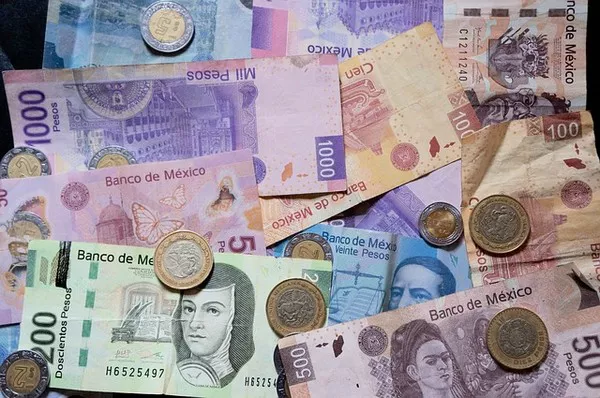The Mexican peso (MXN), one of the most traded emerging market currencies, has experienced heightened volatility in recent weeks as investors grapple with shifting expectations around US interest rates, domestic political uncertainty, and broader global risk sentiment. The currency, which had been one of the best-performing in Latin America over the past year, has seen a sharp correction, raising questions about whether its resilience can endure in the face of new economic challenges. The peso’s recent movements highlight the delicate balance Mexico must maintain between external financial pressures and internal economic stability, particularly as the country prepares for key political developments in the coming months.
The primary driver of the peso’s recent fluctuations has been the evolving outlook for US monetary policy. Earlier in the year, expectations were high that the Federal Reserve would begin cutting interest rates as early as June, which supported risk assets globally, including the MXN. However, stronger-than-expected US economic data, particularly in employment and inflation, has forced markets to recalibrate their expectations. Fed officials have signaled a more cautious approach, with some even suggesting that rate cuts may not materialize until late 2024 or early 2025. This shift has strengthened the US dollar (USD) across the board, putting pressure on emerging market currencies like the peso. The USD/MXN exchange rate, which had stabilized around 16.50 in early 2024, has since climbed toward 17.00, reflecting the peso’s depreciation.
Mexico’s close economic ties with the US make the peso especially sensitive to changes in US financial conditions. As the largest trading partner of the US, Mexico benefits from strong export demand, particularly in manufacturing and automotive sectors. However, higher-for-longer US interest rates could dampen economic activity, reducing demand for Mexican goods. Additionally, tighter monetary policy in the US tends to draw capital away from emerging markets, as investors seek higher yields in safer dollar-denominated assets. This dynamic has been evident in recent weeks, with foreign investors pulling funds from Mexican bonds and equities, exacerbating the peso’s decline.
Domestic factors have also contributed to the peso’s instability. President Andrés Manuel López Obrador (AMLO) has continued to pursue policies that have raised concerns among investors, including increased state intervention in key industries such as energy. While his administration has maintained fiscal discipline—avoiding the excessive spending seen in some other Latin American countries—political uncertainty ahead of the 2024 presidential election has created unease. The leading presidential candidate, Claudia Sheinbaum of AMLO’s MORENA party, has signaled continuity with the current government’s policies, but some investors fear further nationalist economic measures could undermine private sector confidence.
Another critical issue affecting the peso is the performance of Mexico’s economy. While growth has been relatively stable, inflation remains stubbornly high, limiting the ability of the Bank of Mexico (Banxico) to cut interest rates aggressively. Banxico has maintained a hawkish stance, keeping its benchmark rate at 11.00%, one of the highest in the world. This has provided some support for the peso by maintaining attractive yield differentials with the US. However, if inflation does not ease sufficiently, Banxico may be forced to hold rates steady for longer, potentially slowing economic growth. On the other hand, premature rate cuts could trigger capital outflows and further weaken the peso, presenting a difficult policy dilemma.
Global risk sentiment has also played a role in the peso’s performance. As a currency often used as a proxy for emerging market risk, the MXN tends to weaken during periods of geopolitical tension or financial market stress. Recent escalations in the Middle East and ongoing concerns about China’s economic slowdown have contributed to a more cautious investor stance. Additionally, the peso has been affected by fluctuations in commodity prices, particularly oil, as Mexico remains a significant crude exporter. While higher oil prices can benefit the country’s trade balance, they also contribute to inflationary pressures, complicating Banxico’s policy decisions.
Looking ahead, the peso’s trajectory will likely depend on several key factors. The Federal Reserve’s policy path remains the most significant external influence—any signs of a more dovish shift could provide relief to the MXN. Domestically, the upcoming election and subsequent policy direction will be closely watched, as will Banxico’s ability to navigate inflation without stifling growth. Additionally, Mexico’s trade relationship with the US, particularly under the USMCA agreement, will continue to be a stabilizing force if demand for Mexican exports remains robust.
In conclusion, the Mexican peso is at a crossroads, caught between external financial pressures and domestic economic challenges. Its recent depreciation reflects broader market adjustments to a higher-for-longer US interest rate environment, as well as local political and economic uncertainties. While the peso has shown resilience in the past, maintaining its strength will require careful policy management and favorable global conditions. Investors will be closely monitoring upcoming economic data, central bank decisions, and political developments to gauge whether the peso can regain its footing or face further turbulence in the months ahead.
You Might Be Interested In:


